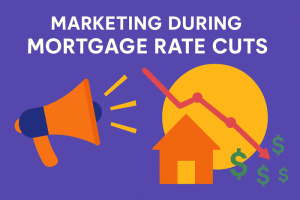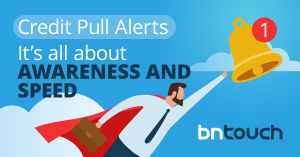Summary
This article emphasizes the importance of buyer personas for mortgage content to align marketing strategies with borrower needs. It outlines methods to identify client pain points and craft tailored messaging. Implementing these strategies ensures more effective communication and stronger borrower connections.
Are you familiar with Marketing Mary, Bookkeeper Beth or Accountant Adam? If you guessed these are personas, you are correct. Have you built personas for your business’s ideal customers? How much do you know about your customers?
What Are Personas?
Personas are semi-fictional representations of your ideal customers. They are the road map for so many things that your business is involved in. They help your marketing efforts, sales efforts, and also your product and services road maps. The most important thing to note about personas is that they target your “ideal customers”. In other words, you don’t want just any customer. You want the right customer. Personas drill down on who the ideal customers are and help you craft everything with them in mind.
Personas are a critically important element of your company’s overall success, but how exactly do you make one?
While personas do take time to develop, there are some specific steps you can take to put them together in a methodical process that will ensure you have a much better grasp of who your ideal clients are.
BUT, before we jump into these steps, let’s do a quick review of why having a well thought out buyer personas are so important to the success of your business.
Mortgage Borrower Personas In Action
Personas are the road map that gives you the details you need to determine what content and messaging will be deemed most engaging to your ideal customers. If you have multiple personas, this means creating specific marketing messages for each buyer persona, ensuring that they are as specific and pertinent as possible to each target persona.
For example, let’s pretend your mortgage company has two buyer personas. One is commercial property investors and the other is first-time homebuyers. The messaging and imagery you would use to attract the attention of commercial investors is going to be vastly different than the messaging you would use for first-time residential homebuyers. This may seem like an obvious observation, but you would not believe how many people get this wrong.
Or, imagine that you are working with different groups of residential buyers. You do your research and you determine that you want to create a persona for young couples that live in high-rise condos in downtown areas (metro Mark & Melissa), one for couples that are new parents and have decided it might be time to move out to the suburbs (family Frank and Francine), and finally one for empty nesters that have sent their children off to college and are considering moving closer to stores, restaurants and other amenities in a smaller home or condo (downsize Dave and Dorris).
As you can see, in some ways these personas are linear to a life cycle of the average person. You’re young, get married, have kids, settle down, raise your children and then decide to move into a smaller home that needs less upkeep and attention. Even though these personas are connected in that fashion, they all require a unique approach when planning your marketing.
The content you create for each of these client personas has to revolve exactly around where they are at that exact point in their lives. There are things each persona will deem valuable and pertinent. There are common challenges and goals you’ll see each persona faces as you do your research. You’ll also want to deliver content to each group in a different fashion, as were Mark & Melissa are absorbing content is almost certainly not where Dave and Dorris get most of their content.
Personas give you the power to deliver a level of personalized content to your ideal prospective clients that a shotgun approach can never achieve.
Create A Buyer Persona
Buyer personas are best created when you do target market research and combine that research with interviews and surveys of your existing customers and prospects.
To get started with this, follow some of these basic steps:
-
Your Database
Look through your client database and see if you can find any consistencies or trends. For instance, if all your website landing pages have a form field where leads fill in their main reason for connecting with your mortgage brokerage, and you notice that a majority of your leads are either filling in that they are first-time homebuyers or investors, those are two metrics that you certainly want to take note of when planning out your client personas (e.g. you will build a persona for first-time buyers and a second persona for investors).
-
Talk With Your Team
Your team is undoubtedly fielding inbound calls and walk-in clients day in and day out. Much as you did with your database, you should also survey your team to drill down and find any trends that emerge from the feedback they give you about the leads you are dealing with.
-
Use Surveys
You’ll want to get any info you can from your past clients to discover what they liked most about your brokerage, why they chose you and what they valued most about the services you performed for them.
Now we understand that it might be uncomfortable reaching out to past clients (or leads) and asking them to spend time with you in a live interview or via a survey, but there are some things you can do to make this process painless.
Tips To Attract Interviews To Help Build Your Buyer Personas
Remember, in-depth research is critical to a successful buyer persona. We recommend you automate this process as much as possible, you can even use BNTouch to automatically send out surveys to past clients after their loan has closed.
Here are a few tips you can employ to accomplish this task:
-
Start with past clients
As we mentioned above, this is a great place to start because these people have already worked with you, like you and trust you (at least almost all of them do). Don’t only focus on those that you knocked it out of the park for though. Also, include some “problem clients/transactions” in your interview plans as well.
When you talk with people that didn’t actually have the best experience, focus in on what problems they experienced and get feedback from them. You can actually use this information to help build your negative personas, which will be just as important as the buyer personas when planning your marketing strategy.
Negative personas are personalities who aren’t right for your business. For instance, maybe you’ll learn that first-time homebuyers require a level of customer service and “hand-holding” that just doesn’t fit your brokerage. If that is the case, the marketing strategy you put together would most likely exclude any content geared towards first-time home buyers. These are your negative personas.
If you find that people are initially willing to have an interview with you, but then don’t pick up the phone when the time comes, you may consider giving them some sort of incentive to participate. It may seem silly, but something as simple as a Starbucks gift card will go a long way to get people to do something you want them to do.
-
Next look at prospects
While you can’t most likely get a prospect to agree to have an actual live interview with you, again, consult the data you are collecting when they fill out the contact forms on your website. Chances are you have gathered enough data from them that you can actually draw some conclusions into the types of people that are attracted to your brokerage and put that information into your buyer personas in order to make them as accurate as possible.
While there is no exact amount of data you should collect to help build your buyer personas, we would recommend that you need a sampling of at least 4 or 5 people per persona group you are building.
Sample Questions To Ask When You Perform Your Persona Surveys
Since this research is so important to the quality of the buyer personas that you are going to develop, it’s important to think of the types of questions you will want to ask to ensure you are conducting a comprehensive research.
Here is a list of some questions you may want to consider asking
Role
1) What industry do you work in, and what is your title?
2) What is your marital status?
3) Do you have children?
4) Do you currently own property and what is your mortgage payment (if not, what is your current rent)?
5) What is your annual salary range?
6) What are the most important factors you consider when choosing a mortgage broker?
7) What are the biggest issues you faced when seeking home financing?
8) What research have you done on home financing and where did you do it (e.g. online, interviewing brokers, asking friends, etc.)?
9) What is your educational background?
10) What social media sites do you spend the bulk of your time on?
11) Do you prefer social media, reading blogs, watching videos, or listening to podcasts?
The key to these questions is of course to get answers, but it is also to find out their “whys” to them as well. If you can find out why for instance they prefer a podcast over reading a blog article (e.g. because they can listen to podcasts while running on the treadmill at the gym, versus having to have enough available time to read a blog article), this is all very important additional information you can add into your buyer personas.
Put Your Research To Use
Now that you have your research done, it’s time to start analyzing all the data you’ve gathered.
The very first thing you want to do is look through the data for patterns and start splitting up the information by those patterns. This will give you a good idea of exactly how many buyer personas you are going to be creating.
Next, once you have your number of personas defined, start going through each persona group, one at a time. Start filling in the averages you find about each persona. For instance, educational level, occupations, interests, challenges, goals, where they consume media, etc.
The best way to structure these is to break each persona into three sections:
- Background (Job, Career Path, Family)
- Demographics (Gender, Age, Income, Geographic Location)
- Identifiers (Challenges, Demeanor, Communication Preferences, Goals, Interests)
Since these personas are going to be shared across your mortgage brokerage, you will also want to be sure to add a section with some corroborating information in these personas. This will help drive home the intent of what is noted on the persona for those that weren’t involved in building them or doing interviews. Doing this could be as simple as choosing a noteworthy quote from one of your interviews and including it in the persona itself.
Additionally, every buyer persona will most likely have some common objections. In order to inform your team fully, you should also include a section in your persona that details what some of these common objectives are.
Name Your Personas
Lastly, since you most likely have more than one buyer persona, it’s important you name each one something that is easy to remember that everyone on your team will immediately be able to recall.
The best way to do this is with something catchy. Names like Millennial Meg, Move-Up Mark, Downsize Dave, or Commercial Carol could all be persona names you could use at your brokerage that your team would be able to easily remember. With each name, to drive home their memory, it’s a great idea to include an image (illustration or headshot) of that semi-fictitious.
Congratulations!
You’ve just completed your first buyer persona from scratch. Repeat these steps for each of your defined buyer persona groups and when done, you’ll have the exact roadmap necessary to plan your marketing content and messaging to attract more engagement and grow your mortgage business faster than you ever thought possible.
Key Takeaways
- Create data-driven borrower profiles.
Detailed personas improve the relevance of marketing campaigns by focusing on borrower needs.
- Align messaging with borrower behavior.
Tailored communication enhances engagement and the effectiveness of marketing strategies.
- Build stronger borrower relationships.
By addressing specific client pain points, lenders can establish trust and rapport.
Commonly Asked Questions
- Why are buyer personas essential in mortgage marketing?
Buyer personas help lenders understand and cater to specific borrower needs. They guide personalized marketing strategies that resonate with different client segments.
- What’s a critical step in creating effective buyer personas?
Conducting in-depth research is crucial to identify client demographics, pain points, and preferences. This ensures the personas accurately reflect target audiences.
- How do buyer personas improve marketing strategies?
They enable lenders to create targeted campaigns that align with borrowers’ goals and challenges. This focus increases engagement and conversion rates.
- What are the main characteristics included in buyer personas?
Personas typically include details like income levels, borrowing goals, challenges, and communication preferences. These factors provide a comprehensive profile for targeted outreach.





